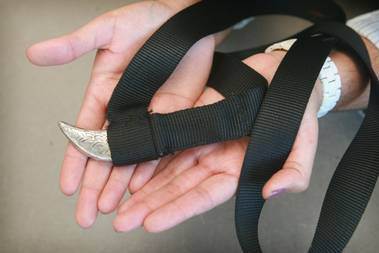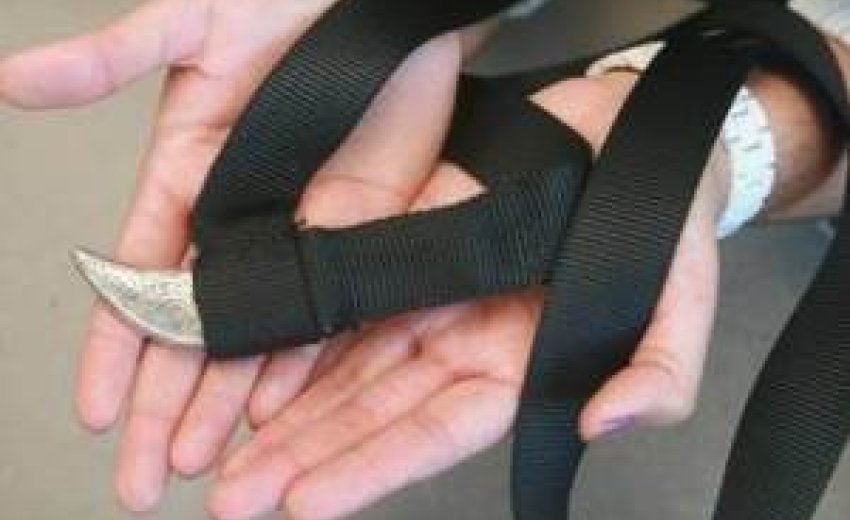 |
| "Jurupa school board members on Monday, Nov. 19, discussed safety issues on campus, including a request by some Sikh students to bring ceremonial kirpans to school." (source: Press-Enterprise) |
In southern California, the Board of the Jurupa Unified School District recently enacted a provision allowing Sikh students to carry a kirpan — a sword or blade that is an article of the Sikh faith — on its school campuses:
The issue arose when a student made it known when school began that he/she wears the kirpan as part of religious practice:
According to Superintendent Elliot Duchon, the Sikh families have made concessions in order to accommodate security concerns related to the kirpan, of which none have been reported:
As an article of the Sikh faith adopted in 1699, the kirpan is one of the “five K’s” for Sikhs who have been initiated into the Khalsa order (by way of an initiation ceremony called Amrit Sanchar) — the other four being the well-known uncut hair (kes) and steel bracelet (kara), as well as a comb (kangha), and a specific type of undergarment (kachera). The turban, as the head-covering, is also a recognized article of faith. There is no hierarchy among these articles, and the responsibility for the initiated Sikh to wear each of them is equal. While we often hear about discrimination of Sikhs based on their uncut hair and the turban, as we see in the case of the Jurupa Unified School District, the kirpan presents a very different and complicated issue. The kirpan is an expression of core values of the Sikh faith, and Khalsa Sikhs are obliged to wear the kirpan under a very specific mandate:
Indeed, given the nature of this article of faith, we often see the right to religious freedom confront appreciable concerns about safety. While Sikhs are as much concerned about safety as it relates to the kirpan, as an article of faith it is one of our most difficult issues to reconcile with public perception. For one school board member in the Jurupa Unified School District, his sole dissenting vote on the provision to allow the kirpan was his concern for safety:
However, he was outvoted by a 4-1 margin:
Often, the kirpan is described as a “symbol” of the Sikh faith, and perhaps this has made it more palatable to those who might be more averse. However, in my view, the kirpan is not simply an ornament to signify a belief, but an instrument with which we are to fulfill our duty as Sikhs. Therefore, it is reassuring that the parents and school administration could work out a compromise to balance both sides of the issue. |
